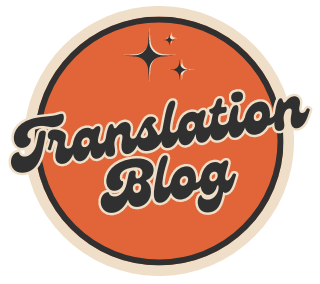Translation is accelerating more quickly than ever. With businesses reaching out globally and technology revolutionizing workflows, the machine translation vs human translation argument has come into focus more than ever. Both are unique in what they offer and the choice to use one rather than the other should be made to have your material meet the demands of its audience and your company’s objectives.

What is Machine Translation?
Employing software to translate text from one language into another without human touch has been made more efficient and simpler with well-known tools such as Google Translate, DeepL and Microsoft Translator. They use artificial intelligence, neural networks and substantial multilingual databases to forecast and produce translations. In the past years, the quality of machine-generated versions has increased dramatically, particularly in the main languages. Nevertheless, even top-level algorithms cannot cope with cultural nuances, tone, sarcasm and sector-specific jargon when comparing machine translation to human translation.
Why Human Translation Continues to Matter
Human translators provide a level of comprehension that machines have not yet been able to match. Professional translators don’t merely translate words; they translate meaning, emotion and nuance into the target culture. They catch allusions to culture, double meanings and tone changes that machines frequently overlook.
A human touch is essential when human translation is compared to machine translation for fields like law, literature, healthcare and marketing — where misconnection costs could be dire. Human expertise is greatly valued in the way that comes with creative writing, advertising copywriting, legal agreements and clinical reports.
Industries Affected by Machine Translation
Machine translation is not only an assistance tool—it’s revolutionizing industries. Law firms, financial institutions, health providers and even news corporations are implementing machine translation to streamline operations and handle more material.
For instance, law firms employ machine translation to review documents initially so that thousands of pages are quickly screened.
But the legal industry is also getting disrupted by AI and machine learning algorithms that can ease the pressure on law firms.
AI has even been used as the basis for legal AI-based startups such as Mighty.com.
When it some documents like letters of demand—Mighty emphasizes that although these are sensitive—AI today has enough information to be able to help a client without requiring an actual lawyer, especially when the claim they are submitting is straightforward.
Convenience, Cost and Speed
One of the primary reasons for the surge in machine translation is its speed and affordability. A 10,000-word document can be translated by a machine in seconds, while, depending on workload and complexity, human translators can take days or weeks to do the same job.
Financially, machine translation is frequently free or cheap compared to employing professional translators. However, there is an added expense: quality control. Machine translations frequently need post-editing to make corrections and refine the message, which reduces some of the savings in terms of time and money.
This is an important point in the general machine vs human translation debate — raw machine outputs are not usually publish-ready, particularly when the stakes are high.
Quality and Context Are Still King
Although tremendous progress has been made in machine translation, the bottom line is that it remains error-prone when translating technical jargon or culturally dense material. Human translators cannot be replicated when accuracy is paramount. They know that words can mean so much more than what is found in the dictionary and adapt their translations accordingly. A legal text must maintain the same meaning in every clause, whereas an advertising slogan may need to be completely reimagined to be suitable in some new culture.
Even in speed-sensitive industries, more firms are realizing that company-generated content needs to be examined by professional linguists first. This blended model—machine translation with human review—is the way to go for most global businesses these days.
Machine Translation’s Expanding Role
There is no denying that the quality of machine translation is improving. Neural machine translation models are improving at recognizing context and increasingly adapting tone. Machine translation can provide well-enough quality for simpler texts like technical manuals, FAQ pages or internal communications with little or no subsequent editing. Start-ups, online shopping businesses and customer service centres are particularly avid users of AI translation software. Tools like the AI Translator offer a quick and free way to translate everyday content across multiple languages, making machine translation more accessible for individuals and small businesses alike.
Human translation vs machine translation depends mainly on the type of content. Sensitive and high-value content or purely creative work, still requires human skills. However, with high-volume and low-risk material, productivity can be significantly increased and costs lowered through machine translation.
Finding the Right Balance
Instead of questioning which is superior between machine translation and human translation, modern-day businesses seek how to leverage the two most effectively. A model that employs machine translation in its first drafts and human linguist intervention in its editing and localization is rising.
Sectors disrupted by AI-powered translation — law, healthcare and finance — are at the forefront of demonstrating that machines against human translation need not be adversarial. Instead, it can be an alliance, with one supplementing the work of the other to significant effect.
The ideal solution will vary depending on your aims: Speed? Scale? Precision? Cultural resonance? Knowing when to value human oversight can make or break your operation in an international marketplace.

